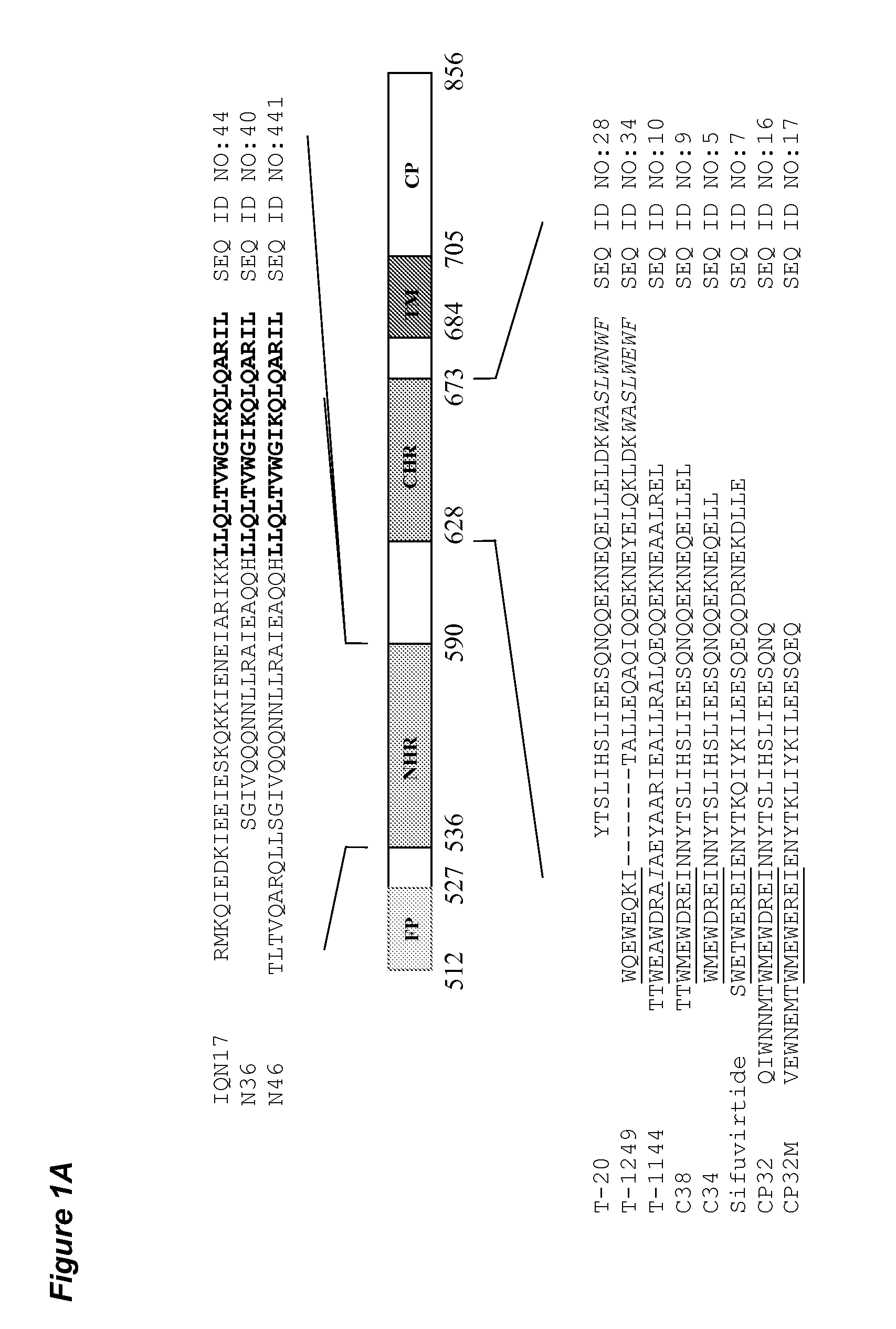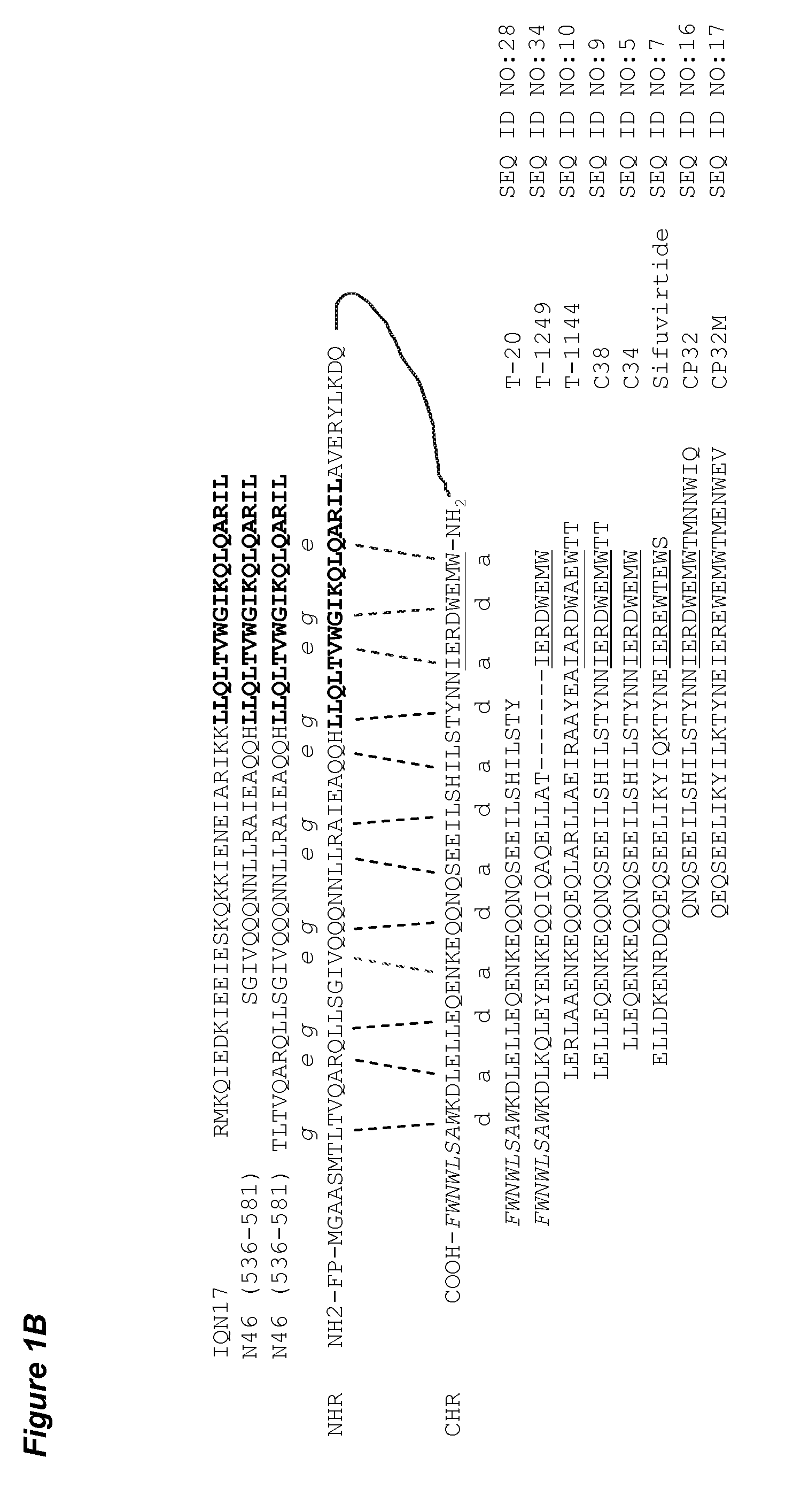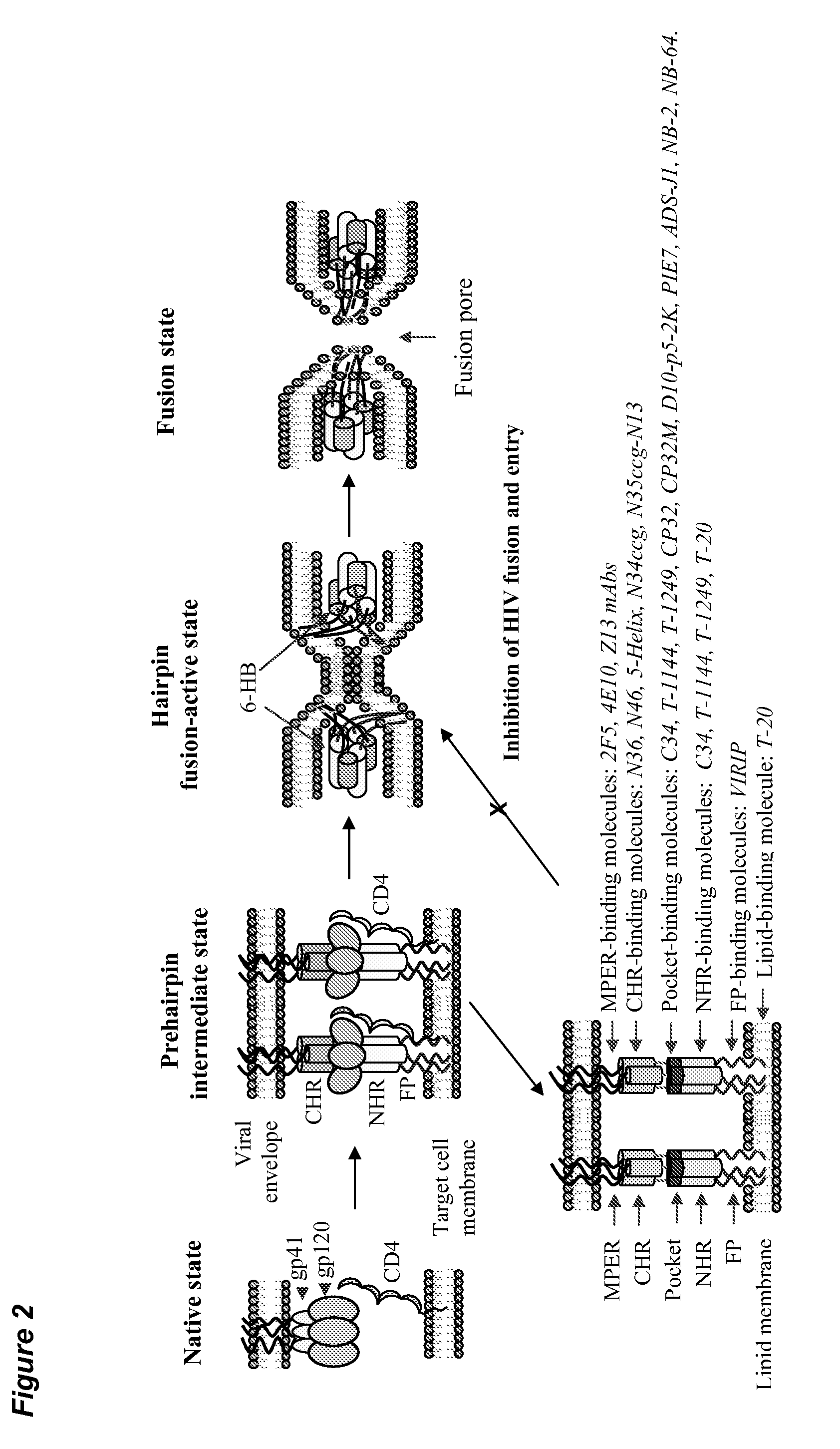Combination Therapy of HIV Using Fusion/Entry Inhibitors Targeting GP41
a technology of fusion/entry inhibitors and hiv, which is applied in the field of antiviral agents, can solve the problems of inconvenient dosage form and schedule, inability to accept patients, and inability to achieve the effect of reducing toxic effects, enhancing the efficacy of anti-hiv drugs, and achieving synergistic anti-hiv activity. extraordinary
- Summary
- Abstract
- Description
- Claims
- Application Information
AI Technical Summary
Benefits of technology
Problems solved by technology
Method used
Image
Examples
example 1
Inhibition of HIV Activity
[0070]1. Inhibition of HIV-mediated cell-cell fusion.
[0071]The inhibitory activities of the compounds on HIV-induced cell-cell fusion were determined using a dye transfer assay (Jiang S et al. Proc SPIE 3926:212-219, 2000). Briefly, H9 / HIV-1IIIB cells were pre-labeled with a fluorescent dye, Calcein AM (Molecular Probes, Inc.), and incubated with a testing compound at a graded concentration at 37° C. for 30 min in a 96-well cell culture plate. Then the CD4+ MT-2 cells were added to the H9 / HIV-1IIIB cells at a ratio of 10:1, followed by incubation at 37° C. for 2 hrs. The fused and unfused calcein-labeled HIV-1-infected cells were counted under an inverted fluorescence microscope with an eyepiece micrometer disc. The percent inhibition of cell fusion by a compound and the EC50 and EC90 values were calculated using the software CalcuSyn.
[0072]2. Inhibition of HIV infection as measured by luciferase assay. The inhibitory activity of fusion / entry inhibitors on ...
example 2
HIV Fusion / Entry Inhibitors Targeting Different Sites in the HIV-1
[0078]The HIV-1 gp41 molecule consists the extracellular domain, transmembrane domain (TM) and cytoplasm domain (CP). The extracellular domain contains a fusion peptide (FP), N-terminal heptad repeat (NHR), and C-terminal heptad repeat (CHR). As shown in FIG. 1A, the NHR-peptide contains a pocket-forming domain (in bold), while the CHR-peptide contains a pocket-binding domain (PBD, in italic), a HR-binding domain (HBD), and a lipid-binding domain (LBD) or tryptophan-rich domain (TRD, underlined) in membrane-proximal external region (MPER). FIG. 1B depicts the interaction between the NHR- and CHR-peptides. The dashed lines between the NHR and CHR domains indicate the interaction between the residues located at the e, g and a, d positions in the NHR and CHR, respectively. The interaction between the PBD in the CHR-peptide and pocket-forming sequence in NHR-peptide is critical for stabilization of six-helix bundle format...
example 3
Analysis of the Interaction Between N46 and CHR-Peptide(s) by CD Spectroscopy
[0079]To delineate the putative mechanism of synergism resulting from the combinations of HIV fusion / entry inhibitors, CD spectroscopy was used to study gp41 NHR and CHR interaction involving in secondary structure changes. CD spectra of single peptides and their mixtures were recorded under identical conditions. The spectra of the mixtures (experimental spectra) and the sum of the spectra of single peptides in the mixture (calculated noninteracting spectra) were compared to determine the interactions. If no structural changes occured because of noninteraction in the mixture, identical experimental and calculated noninteracting spectra were expected. As shown in FIG. 3, the mixtures of N46 with T-1144, T-1249 and T-20, respectively, all displayed large secondary structure changes, indicating interactions between N46 and each of these CHR-peptides. N46 and T-1144, when mixed, formed typical α-helical complex...
PUM
| Property | Measurement | Unit |
|---|---|---|
| volume | aaaaa | aaaaa |
| volume | aaaaa | aaaaa |
| pH | aaaaa | aaaaa |
Abstract
Description
Claims
Application Information
 Login to View More
Login to View More - R&D
- Intellectual Property
- Life Sciences
- Materials
- Tech Scout
- Unparalleled Data Quality
- Higher Quality Content
- 60% Fewer Hallucinations
Browse by: Latest US Patents, China's latest patents, Technical Efficacy Thesaurus, Application Domain, Technology Topic, Popular Technical Reports.
© 2025 PatSnap. All rights reserved.Legal|Privacy policy|Modern Slavery Act Transparency Statement|Sitemap|About US| Contact US: help@patsnap.com



